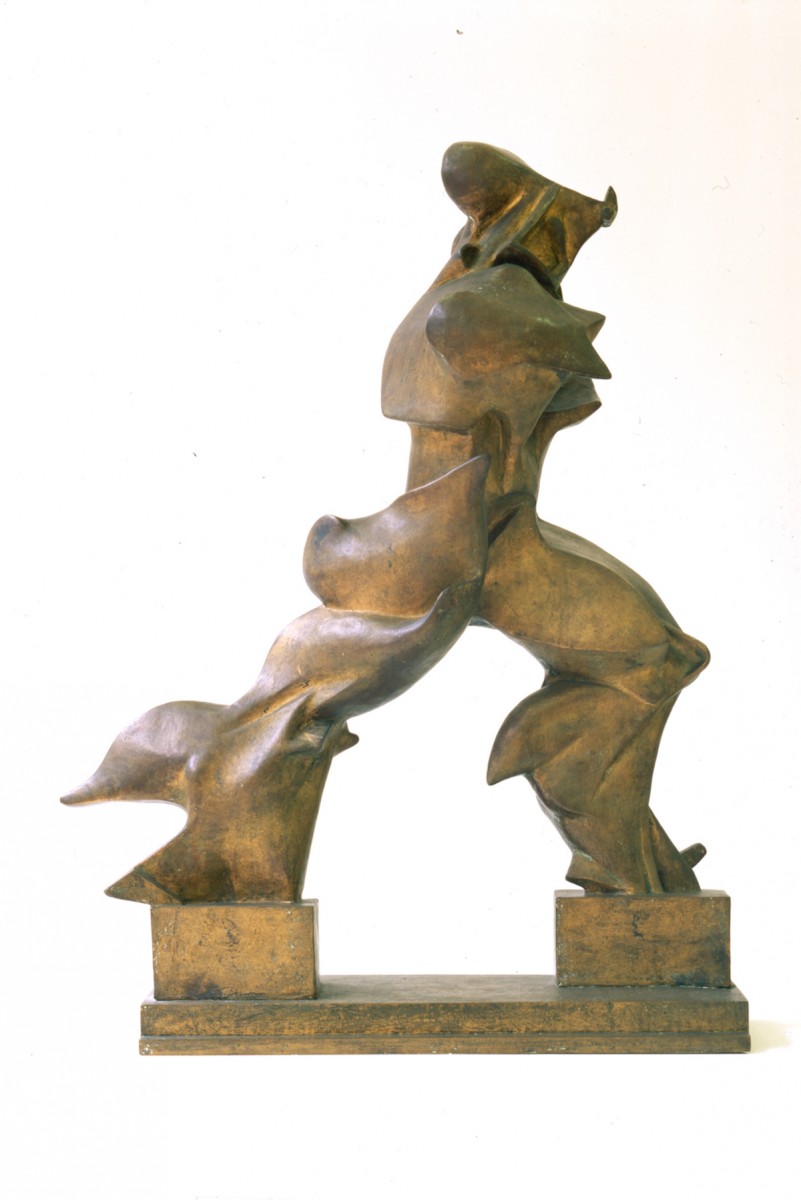Bronze, cast from plaster original: 1949
(foundry: Giovanni and Angelo Nicci, Rome)
120 × 40 × 90cm,
Hilti Art Foundation
Forme uniche della continuità nello spazio (Unique Forms of Continuity in Space) was created with the objective of making the movements and dynamics of the human body visible in space. Marcel Duchamp, like Umberto Boccioni, explored the same concern around 1912, which Henri Bergson had already attempted to capture in philosophical terms. Duchamp painted his Nude Descending a Staircase (1912) the same year in which Boccioni started working on his sculpture Forme uniche. Duchamp had been inspired by chronophotography, a medium he had discovered in physiologist Etienne Jules Marey's textbook Le Mouvement (1894). Boccioni was also familiar with the photographic sequences of the human body in movement reproduced in this book. As a sculptural counterpart to Duchamp's Nude Descending a Staircase, Forme uniche moves into the third dimension but it is still a static visual image. This sculpture is thus unlike all of its art historical precedents inasmuch as it does not merely represent a human body in movement but actually shows the continuum of movement, specifically the way in which it affects and changes the shape of the human body. It is almost as if Boccioni had skinned the body in order to show even more clearly, chronophotographically as it were, how muscles are stretched and elongated by movement. The artist has created the quintessential "futurist image of man" by showing how the body is affected by the "speed of modern life", which was enthusiastically embraced by the Futurists and by Boccioni as one of the movement's main proponents.
To explore the effect of movement on the human body, Boccioni created three other sculptures in 1913, none of which has survived. Ever increasing reduction of his sculptural material ultimately led to Forme uniche, which he executed in plaster, as he had the three preceding sculptures. Authorized bronze casts of the original were not made until after the artist's death.
Uwe Wieczorek
